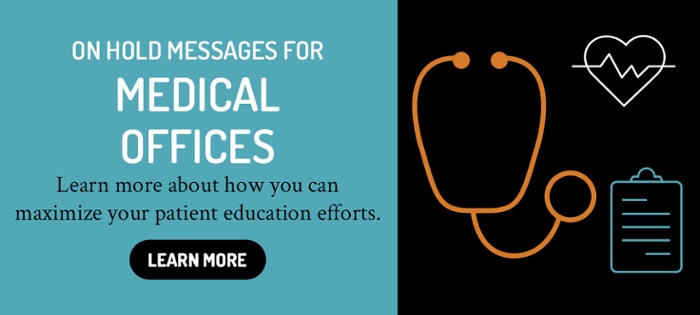 It’s hard to overstate the importance of patient education. Whether you are looking to better prepare patients for surgery, reduce hospital readmissions, or increase patient satisfaction, there are many benefits to offering educational resources.
It’s hard to overstate the importance of patient education. Whether you are looking to better prepare patients for surgery, reduce hospital readmissions, or increase patient satisfaction, there are many benefits to offering educational resources.
Fortunately, you don’t have to spend a lot of time or money to make that happen.
Here are a few tips on how your medical practice can improve patient education in and out of the office.
#1: ENHANCE YOUR WEBSITE
Chances are you have a pretty solid website, and you may already have patient resources available online. But if those resources aren’t highly visible, they won’t get the attention they deserve. Whether it’s a glossary of important medical terms, links to informative health articles, or a patient portal, make sure your patients are aware of all the resources available to them. Highlight a specific article each month on your home page or refresh your site with the latest health information each quarter to keep content visible and relevant.
#2: MAXIMIZE WAIT TIMES
While you’d like to keep patient wait times to a minimum, unfortunately, schedules rarely run on time, and there will always be those last minute walk-ins. However, you can use that time to offer patients valuable health information. Set out educational brochures, show an informative patient video in the waiting room, or display a sign with the office WiFi password and practice website. You should also take advantage of those wait times before patients come into the office. With a message on hold customized for your medical office you can tailor the information you want to them to know. Are you offering a new service? Have you invested in new medical technology? Has a new doctor joined the practice? Let patients know! With on hold messages you can keep patients informed and engaged while they wait.
#3: BE A RESOURCE
For better or worse, people are getting their medical information off WebMD and other sites. And there is a good chance that they are going to do a little online research before or after they visit your office. Beat them to the punch! Create your own resources, with the sound medical advice you want your patients to have. Write a handout during cold and flu season, create a detailed pamphlet on what they can expect post-op, or share information on whatever topics are important to your patients. If you don’t have time to write them yourself, you can find lots of excellent patient education resources through the American College of Physicians.
#4: HOST AN EVENT
Have you found a lot of your patients are asking about the same health topics? Are you introducing a new procedure, technology, or service to your practice? An event offers the perfect opportunity for patient education and allows you to build rapport with current and prospective patients. A few tips for a successful patient event: send a reminder a day or two before; keep it short and informative (no one wants a long winded sales pitch); and serve refreshments. It may take a few events before you gain good traction, but if you follow those guidelines, you’ll be on the right track!
#5: STAY RELEVANT
You will continue to be a resource for patients as long as you continue to provide resources. When you let content get stale, people will look elsewhere for their health information. Creating a social media presence will allow your medical office to stay connected with patients, learn more about what health topics interest them, and respond to health issues in the news or misinformation being distributed online. It is also important to update your other marketing channels frequently to keep the information fresh. Update your blog regularly and keep your on hold messages current with seasonal health tips and reminders.
